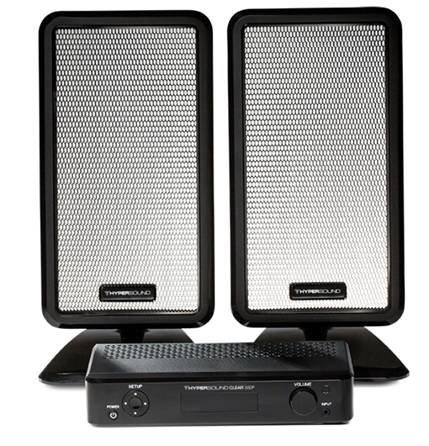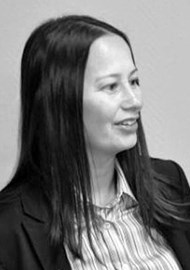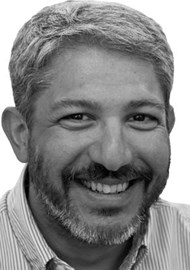In this Spotlight on Innovation we explore an innovative ultra-thin speaker system compatible with TVs, which can be programmed by a hearing professional to a listener’s hearing profile and preferences to deliver a directed 3D listening experience. Whether your patients wear a hearing aid or are at the ‘not quite ready’ stage, this technology is a highly directional and customisable audio solution, one that does not disturb the other listeners in the room. It’s a real treat to experience the 3D effects. Section Editor Nina Reade spoke to Chris Auty, Managing Director EMEA & APAC of HyperSound® Hearing Solutions at Turtle Beach about the product.
In a nutshell, what is HyperSound ClearTM 500P?
HyperSound ClearTM is a first-of-its kind directed audio solution designed specifically for individuals living with hearing loss. HyperSound® speakers improve sound clarity and speech intelligibility for individuals with hearing loss by delivering an immersive audio experience similar to wearing headphones, with the added advantage of not having to ‘wear’ headphones, as well as being programmable and customisable by a hearing professional to a listener’s hearing profile and preferences.
Tell us about the background story to the invention
Approximately 150 years ago, a German physicist named Hermann von Helmholtz discovered that air is nonlinear – the output of a nonlinear system is not directly proportional to the input. He played two organ notes very loudly on his pipe organ and was able to hear what he thought to be a higher frequency and a lower frequency. Through careful measurement, he proved that these new frequencies did actually exist as new tones and were measured to be the sum and the difference of the original notes.
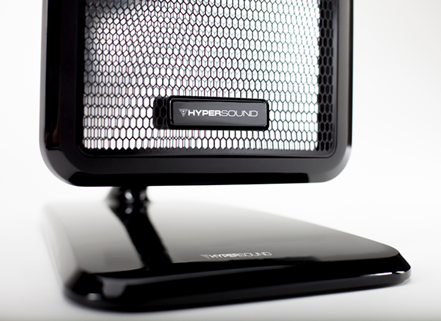
© Turtle Beach Corporation
The Helmholtz experiments were further explained by Westervelt (Brown University) and Blackstock (University of Texas at Austin). They proved that the new tones were the result of propagation distortion caused by the air itself.
It is understood in the world of electronics that sending two frequencies into a non-linear device produces an output that contains both of the original signals, plus the sum of the two, the difference of the two, and a set of harmonics – this process is called demodulation.
Fourier analysis has proven that any signal can be decomposed into a sum of many sine waves with varying amplitude and phase. Because the phenomenon works for tones, we can therefore conclude that it must work for complex waveforms. HyperSound technology takes advantage of this through a patented and patent-pending set of electronics, digital signal processing and algorithms that create complex waveforms such that the nonlinearly-created difference tones in the air reconstruct into the desired audio signal. That waveform is projected from an emitter, or parametric loudspeaker, using ultrasonic frequencies to prevent diffraction. This generates a highly directional sound beam.
HyperSound technology has been applied in the commercial retail and digital signage industry for a number of years. However, when an executive at Turtle Beach with hearing loss experienced the solution for the first time, his first reaction was, “Can I get one for my TV?!”. And so started the commercialisation of a directed audio solution for persons with hearing loss that we see today – HyperSound ClearTM.
What kind of patients might benefit from this invention?
What are the benefits? Hearing instrument wearers and those that choose not to wear hearing instruments have both reported benefits from the HyperSound directed audio solution. And we shouldn’t forget the benefit for those others watching the TV who may have to endure speaker volumes raised to uncomfortable levels. HyperSound technology enables these individuals to set the normal TV audio to a comfortable level for themselves while unobtrusively delivering personalised audio to the listener with hearing loss.
What happens when the amp needs fine-tuning?
The HyperSound amp is easily programmed through our fitting application, HyperFit™. Either installed on the Noah platform or as a stand-alone, programming through HyperFit is done by a hearing professional through a USB to mini-USB cable that connects the computer to the back of the amp unit. We anticipate very high acceptance of first fit programming, however should the patient require any fine-tuning his or her audiologist is able to adjust the output through a series of channel adjusters. There is even the ability for the hearing professional to programme and save two customised listening profiles.
How is HyperSound ClearTM different from a sound bar for a TV?
When you think about traditional audio in its common form, you might think of a speaker vibrating and generating sound. Traditional speakers often vibrate at a relatively high rate, depending on frequency, and push sound throughout a space. Sound bounces off objects in its path before ever reaching a human ear. Regular, everyday sound is delivered through conventional speakers at anywhere between 1-10khz, and the sound wave spreads out rather wide from the source (i.e. speaker).
Audio from the HyperSound ClearTM solution is fundamentally different. A traditional loudspeaker can be thought of as a bare light bulb and HyperSound technology as a flashlight beam. As with the light bulb, traditional loudspeakers radiate sound in all directions; it does not matter where the listener is positioned within the room, sound will be heard. Often, the listener can point directly to that speaker from anywhere in a room and say “that is where the sound is coming from”.
HyperSound speakers, on the other hand, emit sound in a highly controlled, narrow beam, so that audio can be heard when you are “in the beam” or in a position to hear the reflected sound from a virtual source. This is because, rather than creating sound directly using a vibrating speaker cone, HyperSound technology uses ultrasound, creating audio in the air itself.
The audio is highly directional because it is created at an infinite number of points all along an ultrasonic energy column. This provides the unique flexibility to place sound exactly where you want it.
By beaming sound with similar precision to a flashlight, sound is directed towards the intended listener. Because audio can be directed to a specific area it provides individuals in that area the benefit of audio without disturbing others. Additionally, because sound is created in the air rather than at the source, the experience is highly immersive, similar to wearing headphones. HyperSound speakers deliver sound precisely, and consequently less volume is necessary to deliver sound where it is needed.
Combining this unique form of delivering the sound to the intended subject with the customised amplification component of the solution, it’s quite easy to see how HyperSound technology differs from any soundbar available today.
© Turtle Beach Corporation
Is it compatible with Dolby stereo? Can the TV remain on normally for other people and may more than one person listen to the TV at the same time using HyperSound?
Due to the highly directional delivery of the audio, only the individual needing the amplification assistance will receive it. This allows everyone else in the room to enjoy their own TV listening experience through either the existing TV speaker, soundbar or surround sound system at a comfortable level. When watching Dolby surround sound programmes and movies, HyperSound ClearTM will activate its Voice Optimisation feature which enhances the voice content further.
What trials have been conducted to date? What were the findings?
We are fully committed to ongoing research and clinical studies to demonstrate the significant value that HyperSound technology delivers.
One clinical study entitled A Comparison of the HyperSound Audio System to Conventional Audio Speakers in Patients with Mild to Severe Hearing Loss presented at the January 2015 Triological Society Meeting1, showed a statistically significant improvement in sound clarity for both quiet and noisy listening conditions using HyperSound versus conventional acoustic speakers at comparable volume levels. The main outcome measure in the study was sound clarity, as measured by the AzBio Sentences test and the CNC word test. Significant gains in speech understanding were associated with the HyperSound versus conventional speaker for all test conditions at 70 dB. Median AZBio scores increased from 0.0% to 34.9% (p = 0.008) in quiet, and from 1.8% to 51.6% in noise (p = 0.008). Median CNC whole word test scores increased from 0.0% to 54.0% (p = 0.004) and median phoneme test scores from 4.0% to 63.4% (p = 0.004).
When is the likely launch?
HyperSound Clear’s anticipated launch in North America and EMEA will be in the second half of 2015. Further launch dates across APAC are anticipated for early 2016. Currently, HyperSound applications exist in the commercial in-store audio space. We look forward to the hearing healthcare sector launch and seeing the many potential benefits to quality of life for millions of people living with hearing loss.
Where might we get further information?
For further information please visit our website http://hypersoundhearing.com/, also look out for CEU accredited courses on AudiologyOnline. Additionally please do feel free to reach out to us via email: int@hypersoundhearing.com
1Mehta, RP. Novel ultrasonic sound carrier significantly improves speech discrimination in subjects with hearing loss. Otology/Neurotology Scientific Session presented at the Combined Sections Meeting of the Triological Society; January 22, 2015; San Diego, CA, USA. (10 patients with mild to severe hearing loss in a single-blind, randomised cross over study demonstrated improvement in sound clarity, measured with standard speech tests, over conventional speakers at 70 dB at 1 metre, including in background noise.) The author of this study, Ritvik P Mehta, MD, is a paid consultant of Turtle Beach Corporation.
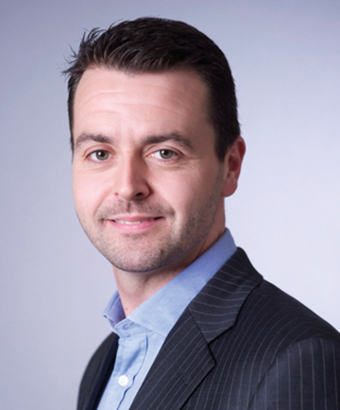
Chris Auty, Managing Director EMEA & APAC of HyperSound® Hearing Solutions.

